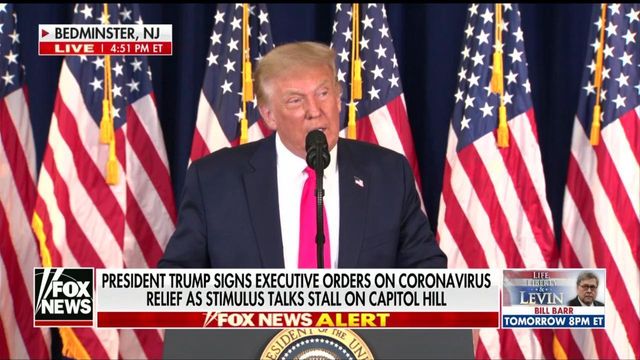Educators call for billions more in federal aid for K-12 schools
With just a few months to plan for a school year that will look very different from any before, education leaders are pleading for billions more in federal aid for K-12 schools because of the coronavirus pandemic.
Posted — UpdatedThe $2 trillion congressional relief package passed in March allocated about $30 billion for education, including colleges. About $13 billion of that went to K-12 schools, and is just beginning to trickle down to districts.
But far more is needed to pay for things like masks, cleaning supplies, handwashing stations and possibly more staff to conduct temperature checks. Schools might need more buses, for example, so students can stay socially distant. Buildings may need to be open longer to allow staggered schedules.
"States will have to be spending 20% more on schools. If they don't, it means we'll have more remote education next year," said Randi Weingarten, the president of the American Federation of Teachers, one of the biggest teacher unions in the country.
"Anybody who's not seriously negotiating right now doesn't really want to reopen schools for children," she added.
Congress divided on new funding
House Democrats approved a new, sweeping spending bill in May called the HEROES Act, which included about $90 billion for K-12 schools and colleges. But Republicans, who control the Senate, called that measure dead on arrival and appear in no rush to approve another aid package -- especially after last week's robust jobs report suggested that the economy is on the upswing.
The union is calling for $175 billion in funding for education -- even more than the Democratic bill would provide -- as well as at least a $750 billion investment in state and local governments to help keep teachers and school staff employed. Facing budget shortfalls due to the pandemic, state and local governments slashed 571,000 jobs in May, even as other sectors of the economy started to add jobs. Those losses were on top of the 964,000 jobs that disappeared in April.
Nina Rees, president and CEO of the National Alliance for Public Charter Schools, also says the funding outlined in the HEROES Act isn't sufficient. She'd like to see a separate pot of money to help schools make sure students have laptops and internet connections, since it's possible many districts will be moving to a blended model with both virtual and in-person instruction.
More than 1-in-5 charter school students and roughly 1-in-8 district school students attend schools in areas with low access to the internet, a report from the group found.
"We want to make sure students of color and students from low-income families are taken care of. They already faced steep challenges and now they have been most severely affected by the current crisis," Rees said.
She's concerned about schools needing more sources to address the mental health needs of students, especially in communities reeling from the combination of the health crisis, the economic collapse and the deeper effects of racial inequality that have been highlighted by recent weeks of protests.
Calls for instructional guidance
There's also a lack of guidance on how schools should plan. Rees says guidelines issued by the Centers for Disease Control and Prevention don't go far enough.
Education leaders are not only weighing how to keep students and faculty safe, but also how to make up for instructional time lost when schools across the US abruptly moved to remote learning this spring -- closures that left almost all of the nation's 57 million schoolchildren, and their parents, struggling to adjust. Policies varied across districts on whether teachers had to take attendance or were required to be online during certain hours.
Weingarten, the teachers' union president, criticized Education Secretary Betsy DeVos for leaving it up to local officials to figure out.
"In any normal administration, either Democrat or Republican, the federal government would have a role in giving out real guidance," she said.
In response, Angela Morabito, a spokeswoman for DeVos, told CNN in a statement that "the Secretary has been focused on empowering local leaders with the funding, flexibility and support they need to make decisions that are best for their students and teachers."
"There is a wealth of resources and information for local leaders on our COVID-19 website, and the Secretary has been in constant communication with state chiefs, governors, and local educators," she added.
The Department of Education has issued guidance on how to divvy up federal funds among school districts and has waived certain regulatory requirements, but it hasn't offered detailed blueprints for schools to follow.
States have moved to fill in the gap.
Virginia Gov. Ralph Northam, a Democrat, laid out a three-stage reopening plan Tuesday specifying guidance for schools -- including single seats on buses and 10-foot distancing on sports fields. Under the plan, which the state stressed is a guide and not a mandate, Northam said most schools could open buildings for summer camps and some elementary grades.
The California guidebook released this week, for example, suggests four different instructional models. Two blend online learning with in-person instruction. One calls for staggering schedules by grade and another would group students with the same teacher over multiple grade levels.
But it advises local education agencies to choose a model that "best fits the needs of their students and families," and to consider other options.
Some argue that more federal funding for schools should come with strings attached.
"Schools should be able to demonstrate that they're actually teaching kids in a reasonable, robust way in order to keep the money," said Frederick Hess, the director of education policy studies at the American Enterprise Institute.
Related Topics
Copyright 2024 by Cable News Network, Inc., a Time Warner Company. All rights reserved.





